
Having trouble viewing this video? Please visit our Video FAQ page In this second of of two videos, David Popp shows how to complete a standard T-Trak module by filling it with foam insulation board and attaching the N scale track (Kato USA Unitrack) in the specified position. The fun has only just begun, […]
Read More…
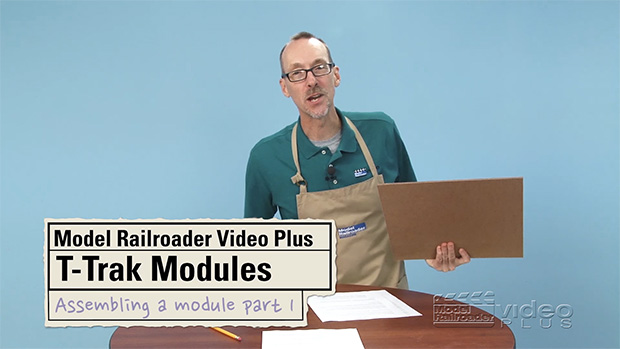
Having trouble viewing this video? Please visit our Video FAQ page Compact tabletop model railroading comes to MRVP in a big way! In this first of two videos, David Popp shows how to assemble a standard 12 x 14-inch T-Trak module. A Dream Team of Kalmbach staffers and contributors will then develop unique […]
Read More…

Having trouble viewing this video? Please visit our Video FAQ page The next step to installing the backdrop for our HO scale Winston-Salem project layout is to prime and paint the hardboard. David Popp shares the products, tools, and techniques he uses to apply a smooth and even finish that enhances the overall appearance […]
Read More…
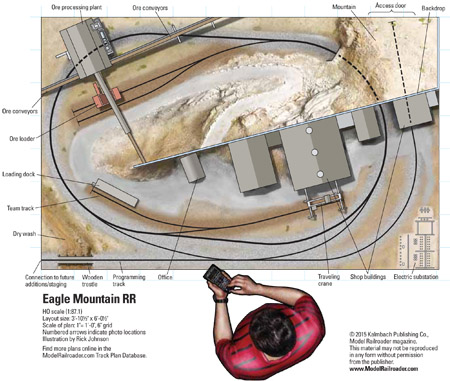
Name: Eagle Mountain RR Layout owner: Model Railroader staff Scale: HO (1:87.1) Size: 3′-101⁄2″ x 6′-01⁄2″ Prototype: Eagle Mountain RR Locale: Riverside County, Calif. Era: late 1960s to early 1970s Style: island, portable Mainline run: 14 feet Minimum radius: 19″ Minimum turnout: Peco no. 5 Maximum grade: none Height: 45″ Track: Peco code 83 flextrack, […]
Read More…
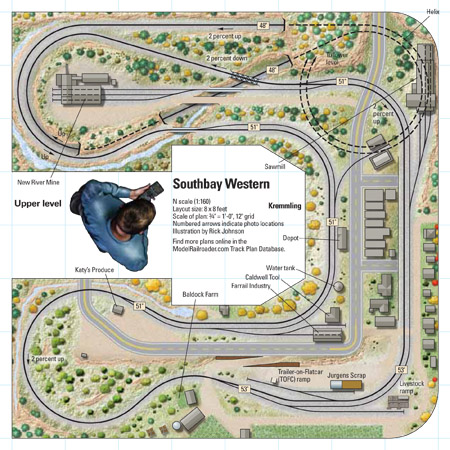
Name: Southbay Western Layout owner: Steve Kibort Scale: N (1:160) Size: 8 x 8 feet Prototype: Freelanced, inspired by Denver & Rio Grande Western Locale: Colorado Rockies Era: Late 1950s Style: double-deck Mainline run: 300 feet (including helix and double reversing loop) Minimum radius: 11″ Minimum turnout: no. 5 Maximum grade: 2 percent Benchwork: modular […]
Read More…

Download waybills and engine and caboose assignment cards for your model railroad operating sessions. Learn about routing non-revenue equipment in the new Ask MR column in the December 2015 Model Railroader. You can also download these waybills and operating forms, including contributing editor Tony Koester’s caboose assignment card and engine assignment card as well as […]
Read More…
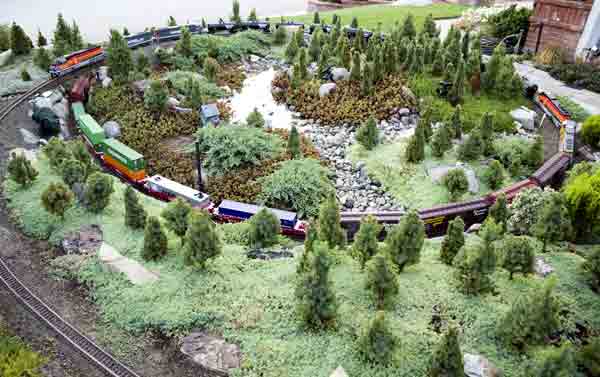
Name: Morning Glow Railroad Size: Irregular L-shaped 100′ x 150′ Scale: 1:29 Gauge: Nº 1 (45mm) Era: 1960 to present—all diesel Theme: Southern Pacific—Donner Pass to Tehachapi Age: 3 years Motive power: All battery Length of mainline: 1,101′ Maximum gradient: 3 % Track: Code-250 stainless steel; #10 pneumatic turnouts Minimum radius: 7′ Water features: 500-gallon […]
Read More…
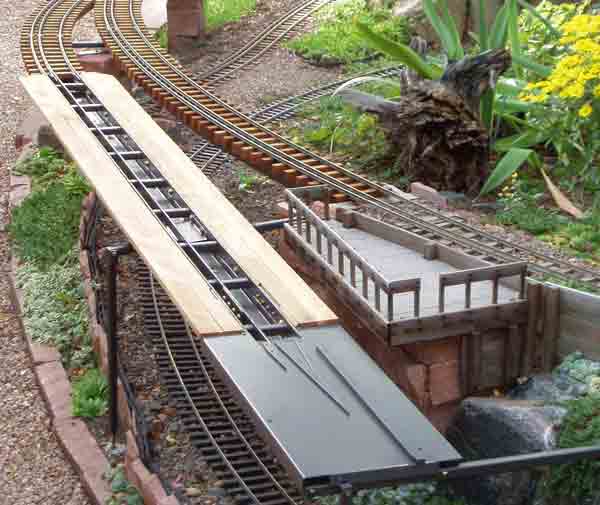
Download a PDF of the article here. […]
Read More…
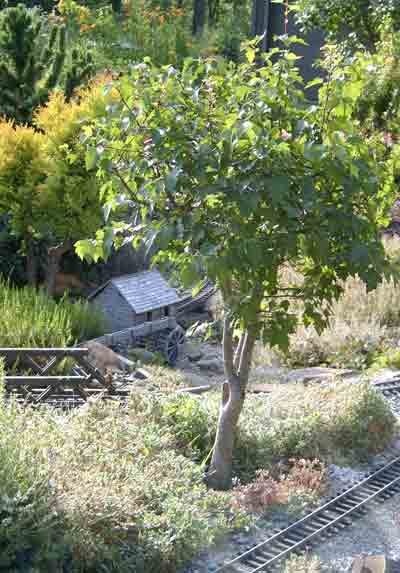
1. A five-to-six-year-old Washington hawthorn tree on the author’s former railroad. Don Parker 2. A potted three-to-four-year-old hawthorn growing in the Hoot ’n’ Holler railroad garden. (Note the use of double potting to aid in getting the tree out of the ground for root pruning. Also note the thorns.) Don Parker 3. A dawn redwood […]
Read More…
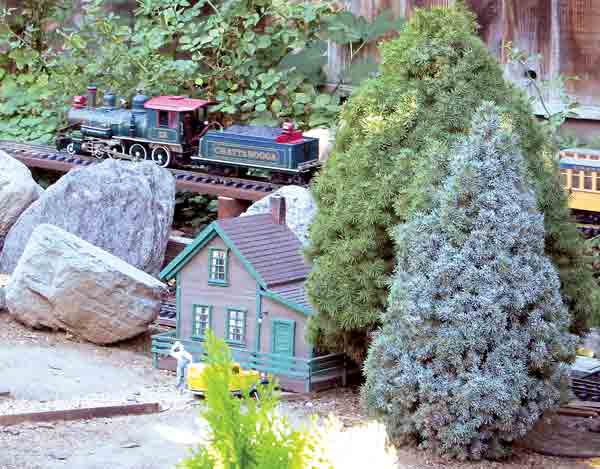
Nancy Norris Common name: Sanders Blue dwarf Alberta spruce Latin name: Picea glauca ‘Sanders Blue’ aka P.g. ‘Sanderi’ Plant type: Dwarf conifer USDA Hardiness Zones: 4-9 (winter protection in Zones 3-5) Cultural needs: Moist, well-drained, slightly acidic soil, sun or part shade Plant size: 4-6′ high by 2-3′ wide in 10 years, if not pruned […]
Read More…

Name: Fairhope & Northern RR Scale: HO (1:87.1) Size: 14 x 22 feet Prototype: freelanced, inspired by New York, New Haven & Hartford Locale: New England Era: 1950s Style: walk-in Mainline run: 84 feet Minimum radius: 26″ (visible track), 22″ (hidden track) Minimum turnout: no. 4 Maximum grade: 3 percent Benchwork: L-girder Height: 40″ to […]
Read More…
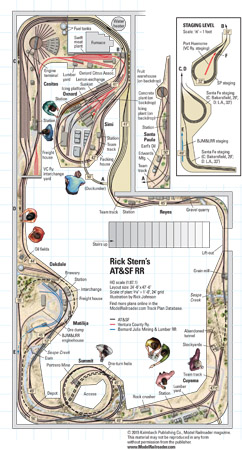
Name: Santa Fe Scale: HO Size: 30 x 48 feet Prototype: freelanced, inspired by Atchison, Topeka & Santa Fe Locale: Southern California Era: early 1950s Style: walk-in Mainline run: 360 feet Minimum radius: 34″ (main), 26″ (branch) Minimum turnout: no. 6 (main), no. 5 (secondary), no. 4 (branch) Maximum grade: 4 percent Benchwork: open frame […]
Read More…












